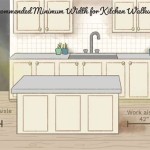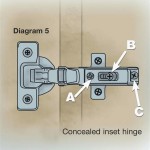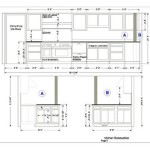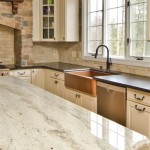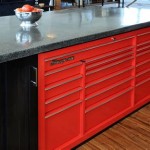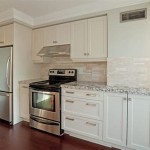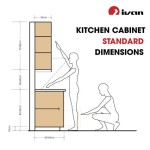Understanding Kitchen Cabinet Component Names: A Comprehensive Guide
Kitchen cabinets are a fundamental element of any kitchen design, providing crucial storage space while simultaneously contributing to the overall aesthetic. Comprehending the names and functions of the various components that constitute a kitchen cabinet is essential for effective communication during kitchen renovations, remodels, or even for simple repairs. This article provides a detailed overview of the common component names associated with kitchen cabinets, ensuring a clear understanding of their purpose and construction.
Kitchen cabinets are typically categorized into two primary types: base cabinets and wall cabinets. Base cabinets are installed directly on the floor and provide support for countertops. Wall cabinets are mounted on the wall and offer storage at eye level. Within these two broad categories, there exists a wide array of component parts, each serving a specific role in the cabinet's structure and functionality.
Key Components of Base Cabinets
Base cabinets form the foundation of kitchen storage and often accommodate appliances and sinks. Understanding their components is crucial for planning a functional and efficient kitchen layout.
Cabinet Box: The cabinet box is the main structure of the base cabinet. It's typically constructed from particleboard, plywood, or medium-density fiberboard (MDF). The box comprises the sides, back, bottom, and top (often referred to as a stretcher or support rail). The quality of the box material will significantly impact the cabinet's durability and longevity.
Face Frame: Many traditional kitchen cabinets utilize a face frame. This is a frame of wood that is attached to the front of the cabinet box. The face frame typically consists of two vertical pieces called stiles and two horizontal pieces called rails. The face frame adds structural rigidity and provides a surface for attaching doors and drawer fronts. Face frame cabinets often have a more traditional look.
Frameless Construction (European-style): An alternative to face frame construction is frameless construction, also known as European-style. In frameless cabinets, the doors and drawer fronts attach directly to the edges of the cabinet box. This construction method offers easier access to the interior of the cabinet and often provides a more contemporary aesthetic. The edge banding used on frameless cabinets is crucial for durability and aesthetics.
Doors: Doors are attached to the cabinet box using hinges and provide access to the interior storage space. Door styles vary widely, ranging from simple flat panels to raised panel designs. Materials also vary and include solid wood, veneer, laminate, and thermofoil. Door construction affects both the appearance and the durability of the cabinet.
Drawers: Drawers provide accessible storage for utensils, cookware, and other kitchen items. They consist of a drawer box, drawer slides, and a drawer front. The drawer box is typically constructed from wood or metal. Drawer slides allow the drawer to open and close smoothly and are available in various weight capacities and extension lengths.
Drawer Fronts: Similar to doors, drawer fronts attach to the front of the drawer box and contribute to the overall style of the cabinet. They are available in the same materials and styles as cabinet doors, ensuring a cohesive look throughout the kitchen.
Shelves: Shelves provide internal storage within the cabinet box. They can be either fixed or adjustable. Adjustable shelves offer greater flexibility in organizing cabinet contents. Shelf materials typically match that of the cabinet box.
Toe Kick: The toe kick is the recessed area at the bottom of the base cabinet. It allows individuals to stand closer to the countertop without bumping their toes, improving comfort and ergonomics in the kitchen. It usually is a separate piece attached to the base of the cabinet.
Legs/Levelers: Most base cabinets have adjustable legs or levelers. These allow for fine-tuning the height of the cabinet and ensuring that it is level, even on uneven floors. This is especially important for proper countertop installation.
End Panels: End panels are finished panels that are placed on the exposed ends of base cabinets. They provide a finished look and help to conceal the cabinet box construction. They typically match the door and drawer front finish.
Key Components of Wall Cabinets
Wall cabinets, also known as upper cabinets, are mounted on the wall and are used to store dishes, glassware, and other kitchen essentials. Their components are similar to base cabinets, but there are a few key differences.
Cabinet Box: Just like base cabinets, the cabinet box forms the main structure of the wall cabinet. It is typically constructed from the same materials as base cabinet boxes (particleboard, plywood, or MDF). Wall cabinets are typically shallower than base cabinets.
Face Frame/Frameless Construction: Wall cabinets can be constructed with either a face frame or frameless construction, mirroring the options available for base cabinets. The choice between the two often depends on aesthetic preferences and the desired level of accessibility.
Doors: Doors are attached to the wall cabinet box using hinges. Wall cabinet doors are available in a wide range of styles, including solid doors, glass doors, and open shelving options. Glass doors are often used to display dishware and glassware.
Shelves: Shelves provide internal storage within the wall cabinet. They are typically adjustable to accommodate items of varying heights. Shelf materials usually match that of the cabinet box.
Hanging Rail/Cleat: Wall cabinets are typically hung using a rail or cleat system. This is a strip of wood or metal that is attached to the wall and the cabinet is then hung onto it. This provides a secure and stable mounting solution.
Light Rail Molding: Light rail molding is a decorative molding that is installed on the underside of wall cabinets. It conceals under-cabinet lighting and provides a finished look.
End Panels: Similar to base cabinets, end panels are used to provide a finished look to the exposed ends of wall cabinets. They typically match the door and drawer front finish.
Understanding Hardware and Accessories
Beyond the core structural components, hardware and accessories play a critical role in the functionality and aesthetics of kitchen cabinets.
Hinges: Hinges are the hardware that allows doors to swing open and closed. They are available in a variety of styles, including concealed hinges, which are hidden when the door is closed, and exposed hinges, which are visible on the exterior of the cabinet. Soft-close hinges are a popular option, providing a smooth and quiet closing action.
Drawer Slides: Drawer slides allow drawers to open and close smoothly. They are available in various weight capacities and extension lengths. Ball-bearing slides are known for their durability and smooth operation. Soft-close drawer slides are also available.
Pulls and Knobs: Pulls and knobs are decorative hardware that are attached to doors and drawer fronts. They provide a grip for opening and closing the cabinets. Pulls and knobs are available in a wide range of styles, materials, and finishes, allowing for customization to match the kitchen's overall design.
Cabinet Lighting: Cabinet lighting can be added to both base and wall cabinets to enhance visibility and create a more inviting atmosphere. Under-cabinet lighting is commonly used to illuminate countertops, while interior cabinet lighting can make it easier to find items stored inside the cabinets.
Roll-Out Shelves: Roll-out shelves, also known as pull-out shelves, are installed inside base cabinets to improve access to items stored in the back. They are particularly useful for storing pots, pans, and other large items.
Lazy Susans: Lazy Susans are rotating shelves that are installed in corner cabinets. They allow for easy access to items stored in the back of the cabinet.
Spice Racks: Spice racks are designed to store spices in an organized and accessible manner. They can be installed inside cabinets or on the back of cabinet doors.
Trash Pull-Outs: Trash pull-outs are designed to conceal trash cans inside a cabinet, keeping them out of sight. They typically feature a sliding mechanism that allows the trash can to be easily pulled out and pushed back in.
Understanding these kitchen cabinet component names empowers individuals to effectively communicate their needs and preferences when planning a kitchen renovation or remodel. It allows for informed decision-making regarding cabinet materials, construction methods, and hardware options. By familiarizing oneself with these terms, one can confidently navigate the world of kitchen cabinetry and create a functional and aesthetically pleasing kitchen space.

Kitchen Cabinet Parts Names Google Search Plans Cabinets Making

Cabinet Parts And Profiles

Kitchen Cabinet Terms Cabinets Of The Desert

10x10 Bay Shaker White Kitchen By Cabinetselect Com

Parts Of A Cabinet Doors

Everything You Need To Know About Kitchen Cabinets Rona

Cabinets Countertops Home Preservation Manual

Kitchen Cabinet Parts Terminology Granite Quartz Countertops Cabinets Factory

Cabinets What Is The Name Of This Part Drawers Home Improvement Stack Exchange

Kitchen Cabinet Parts Terminology Granite Quartz Countertops Cabinets Factory
Related Posts

